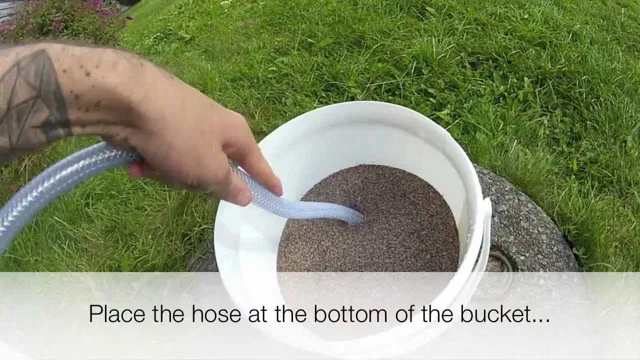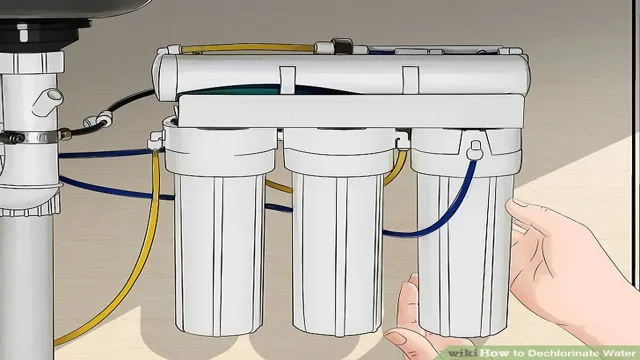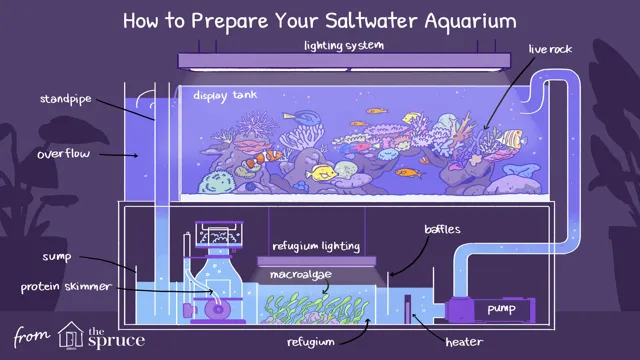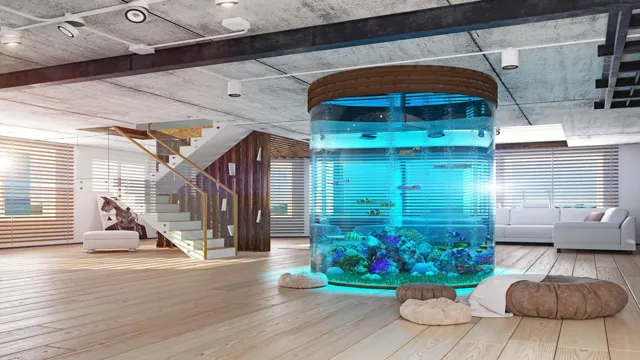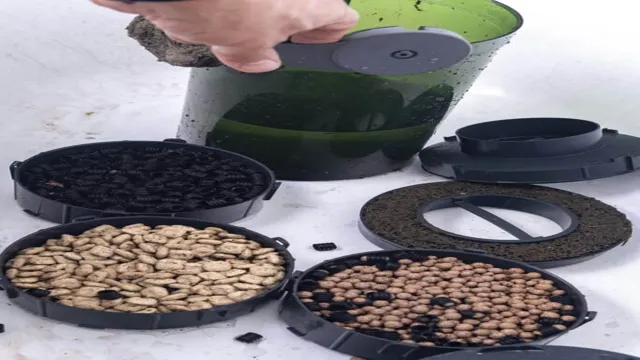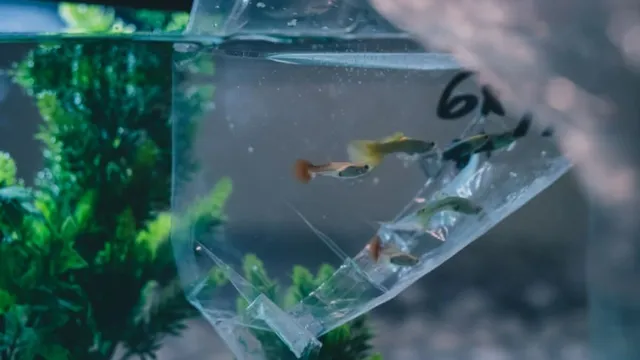Keeping the aquarium clean is essential for the healthy and happy life of your aquatic pets. While many aquarium owners focus on cleaning the water and changing it at regular intervals, they often overlook the cleaning of the sand at the bottom of the tank. Over time, the sand can accumulate debris, uneaten food, and fish excreta, which can harm fish and other aquatic creatures.
So, how can you effectively clean the aquarium sand in the tank to maintain a healthy living environment for your fish? In this blog post, we will guide you on how to clean the aquarium sand in the tank without causing harm to the delicate ecosystem of the aquarium. From choosing the right cleaning materials to the step-by-step cleaning process, we’ve got you covered. So, let’s dive in!
Identify the Type of Sand in the Tank
When it comes to cleaning aquarium sand in tank, identifying the type of sand is crucial. There are a few types of sand commonly used in aquariums such as aragonite, crushed coral, silica, and play sand. Knowing the type of sand in your tank will help you determine the best cleaning method and avoid damaging the substrate.
Aragonite and crushed coral sand, for instance, should never be cleaned with vinegar or any acidic solutions as it can dissolve the sand. On the other hand, silica and play sand can be safely cleaned with vinegar or hydrogen peroxide. It’s important to note that sand with a finer texture will require a gentler cleaning approach compared to coarse sand.
By knowing the type of sand in your aquarium, you can ensure a safe and effective cleaning process that will keep your tank environment healthy and clean.
Siphon Out Debris and Waste
When cleaning out a fish tank, it’s important to siphon out any debris and waste to maintain a healthy and clean environment for your aquatic pets. However, before beginning this process, it’s crucial to identify the type of sand that’s present in the tank. Some sands are fine and easily disturbed while others are more course and compact.
Knowing which type you have will make it easier to determine the best approach for cleaning. If you have fine sand, be very gentle when siphoning out debris to avoid stirring it up and causing a cloudy and murky water environment. On the other hand, if you have a more course sand, you can be more aggressive with your siphoning technique as it won’t be as easily disturbed.
In any case, it’s important to take your time and ensure that you’re effectively cleaning the sand without causing undue stress to your fish or shrimp. With a bit of practice and experience, it will become easier to determine exactly what approach is best suited to your unique fish tank setup. By taking care to siphon out debris and waste regularly, you’ll keep water conditions optimal for your aquatic pets, leading to happier and healthier aquarium inhabitants overall.
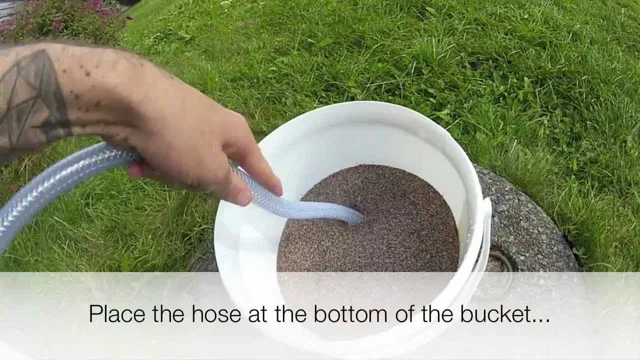
Use a Gravel Vacuum to Deeper Clean
When it comes to cleaning your aquarium, using a gravel vacuum can be a game-changer. Not only can it remove waste and debris from the gravel, but it can also help with water changes. But before using a gravel vacuum, it’s essential to identify the type of sand in your tank.
Some sand, such as aragonite sand, can break down easily, meaning that a gravel vacuum may damage it during cleaning. On the other hand, some sand, such as silicate sand, may not settle well and may require different methods for cleaning. Knowing the type of sand in your aquarium can ensure that you’re cleaning it effectively without causing any damage or harm to your fish or plants.
So, take some time to research the type of sand you have and use appropriate cleaning techniques to keep your aquarium clean and your fish healthy.
Remove Tough Stains with a Brush
When it comes to maintaining your aquarium, knowing the type of sand in the tank is crucial. Different types of sand require different maintenance methods. The first step is to identify if your sand is fine or coarse. (See Also: How to Fill Aquarium from Sink: A Step-by-Step Guide)
Fine sand, such as aragonite, is commonly used in saltwater tanks and requires more frequent maintenance since it traps debris more easily. Coarse sand, like silica, is commonly used in freshwater tanks and requires less frequent maintenance. Once you have identified the type of sand in your tank, it’s important to use the right tools for cleaning.
A brush can be effective for removing tough stains, but it’s important to use a soft-bristled brush to avoid damaging the sand or harming your fish. By identifying the type of sand in your aquarium and using the right tools for maintenance, you can ensure a clean and healthy environment for your aquatic pets. So, take some time to inspect your sand and invest in the appropriate maintenance tools to keep your aquarium in top shape.
Rinse the Sand Thoroughly
If you’re wondering how to clean aquarium sand in tank effectively, rinsing the sand thoroughly should be on top of your list. While it may seem like a tedious task, it’s essential to remove any debris, algae, and other organic matter accumulated in the sand. Start by placing handfuls of sand in a clean bucket and fill it with water.
Stir the sand continuously until the water becomes cloudy. Drain the water slowly, leaving the sand undisturbed at the bottom. Keep repeating this process until the water is clear of any debris.
It’s important to note that rinsing sand will remove some of the beneficial bacteria that live in it. So, if you’re cleaning a new aquarium, adding beneficial bacteria to the tank will help create a healthy environment for your fish. Rinse the sand regularly during water changes to keep your aquarium looking clean and healthy.
Fill a Bucket with Sand and Water
When filling a bucket with sand and water, it’s important to rinse the sand thoroughly beforehand. This may seem like an unnecessary step, but doing so can actually make a significant difference in the quality of your sandcastle. Without rinsing, the sand can be gritty and contain unwanted debris like rocks, shells, and seaweed, which can make it harder to mold and shape.
To rinse your sand, simply gather it into a large bowl or bucket and fill it with water. Use your hands to agitate the sand, allowing any dirt and debris to rise to the surface. Once the water becomes murky, carefully pour it out, making sure to keep the sand inside the container.
Repeat this process until the water runs clear, then drain the excess water. Your sand is now clean and ready to use for building the perfect sandcastle!
Stir the Sand and Pour Water Out
When it comes to using sand in any DIY or construction project, it’s crucial to rinse it thoroughly before use. Not only does this ensure that you’re working with clean sand, but it also helps to remove any unwanted debris or contaminants that could affect the quality of your finished product. To rinse the sand, begin by pouring it into a large bucket or container.
Add enough water to cover the sand entirely, then stir it vigorously. Drain the water out, taking care not to lose any of the sand. Repeat this process until the water runs clear, indicating that all of the dirt and debris has been removed.
Once the sand is clean, you’re ready to put it to work in your project. By taking the time to rinse it properly, you can ensure that you’ll end up with a high-quality finished product that’s free from unwanted contaminants.
Repeat Until the Water Runs Clear
When it comes to setting up a new aquarium, one of the most important steps is ensuring that the sand substrate is thoroughly rinsed before adding it to the tank. This process may seem laborious, but it will prevent cloudiness and debris buildup in your aquarium water. To rinse sand, start by placing it in a bucket or large container. (See Also: How to Grow Freshwater Aquarium Carpet: A Step-By-Step Guide to Creating a Lush Aquatic Landscape)
Next, fill the container with water and vigorously stir the sand around with your hands. Pour off the cloudy water and repeat this process several times, until the water runs clear. This step is crucial, as any lingering debris or dust can impact water quality and harm your fish.
Keep in mind that a little extra effort now will ultimately lead to a healthier and happier aquarium in the long run.
Maintaining Clean Sand in an Aquarium
Maintaining clean sand in an aquarium is crucial for the health and well-being of your aquarium inhabitants. The first step in cleaning the sand is to remove any large debris or leftover food using a siphon vacuum. Next, use a sand rake to gently stir up the sand to release any trapped waste or debris.
You can also use a fine mesh net to catch any suspended particles. If the sand is particularly dirty, consider removing the fish and draining the tank to do a thorough cleaning. Be sure to replace the sand with clean, preferably pre-rinsed sand.
It’s important to avoid overfeeding your fish and to perform regular water changes to prevent excess waste buildup in the sand. By following these simple steps, you can maintain a clean and healthy environment for your aquarium friends.
Perform Regular Water Changes
Performing regular water changes is crucial to maintaining clean sand in an aquarium. This is because leftover food and fish waste that settle in the sand can be broken down by bacteria, leading to a buildup of harmful ammonia and nitrite levels. By removing a portion of the tank water and replacing it with fresh, clean water, you can dilute and remove these harmful compounds before they have a chance to harm your fish and pollute your sand.
It is important to note that when performing water changes, you should not disturb the sand too much, as this can release trapped debris and harm beneficial bacteria. Aim to change 10-20% of the water volume every 1-2 weeks, depending on the size of your tank and number of fish. By performing this simple maintenance task regularly, you can keep your sand looking vibrant and your fish happy and healthy.
Monitor pH and Water Quality for Healthier Sand
Maintaining clean sand in an aquarium is crucial to the health and well-being of your aquatic pets. To ensure that your sand remains free of harmful substances, it is important to monitor its pH and water quality regularly. Changes in pH can affect the chemistry of the water, which can have a negative impact on the living organisms in your tank.
Moreover, poor water quality can lead to the build-up of toxins that can harm your fish and other aquatic creatures. By testing your aquarium’s water regularly, you can identify any potential issues early on and take corrective measures to address them. Therefore, it’s crucial to invest in a good quality water testing kit and regularly check the pH and water quality of your aquarium’s sand.
Doing so will not only help you keep your aquarium looking great but also ensure the overall wellness of your aquatic pets.
Conclusion
In conclusion, cleaning aquarium sand in tank may seem like a daunting task, but with a little bit of effort and patience, your fish will thank you for it. Remember to siphon out any debris regularly, use the right equipment and solutions, and don’t be afraid to get your hands dirty. The key here is consistency, so make sure to establish a regular cleaning routine to keep your tank in tip-top shape. (See Also: How to Make a Small Aquarium in Minecraft: Step-by-Step Guide for Beginners)
And as a bonus tip, if you happen to find a seashell or two while cleaning, don’t be afraid to add them to your aquarium decor – your fish might just love them!”
FAQs
What are the benefits of having sand as a substrate in an aquarium?
Sand as a substrate in an aquarium not only provides a natural look, but it also helps to stimulate a more natural environment for your fish, supports the growth of beneficial bacteria, and allows for proper nutrient cycling.
How often should you clean aquarium sand in a tank?
Aquarium sand should be cleaned at least once a month, but it can be done more frequently if needed. During a regular cleaning, you should remove any debris or uneaten food on the surface, and vacuum the sand to remove any waste.
Can you clean your aquarium sand without removing the fish and plants?
Yes, you can clean aquarium sand without removing the fish and plants. Use a siphon tube to vacuum the sand to avoid disturbing the natural environment. Make sure to replace any water that you remove during the cleaning process.
What is the best way to deep clean aquarium sand?
The best way to deep clean aquarium sand is to use a gravel vacuum to remove debris, followed by a rinse with water and a mild soap solution. Rinse the sand thoroughly to make sure no soap is left behind before adding it back to the tank.
Is it necessary to replace aquarium sand occasionally?
It is not necessary to replace aquarium sand unless it becomes severely contaminated or if you want to change the overall look of your tank. However, it is recommended to perform regular cleanings to maintain a healthy environment for your fish and plants.
Can you reuse the old aquarium sand after cleaning?
Yes, you can reuse the old aquarium sand after cleaning it properly. By rinsing the sand thoroughly and soaking it in a mild bleach solution, the sand can be disinfected and ready for use in the aquarium again.
What are some common mistakes to avoid while cleaning aquarium sand?
Common mistakes include vacuuming too aggressively, which can disturb the natural environment and suck up the sand. It is also important to avoid using harsh chemicals or soaps that can harm the fish or plants. Make sure to always use a siphon tube designed specifically for aquarium cleaning.

